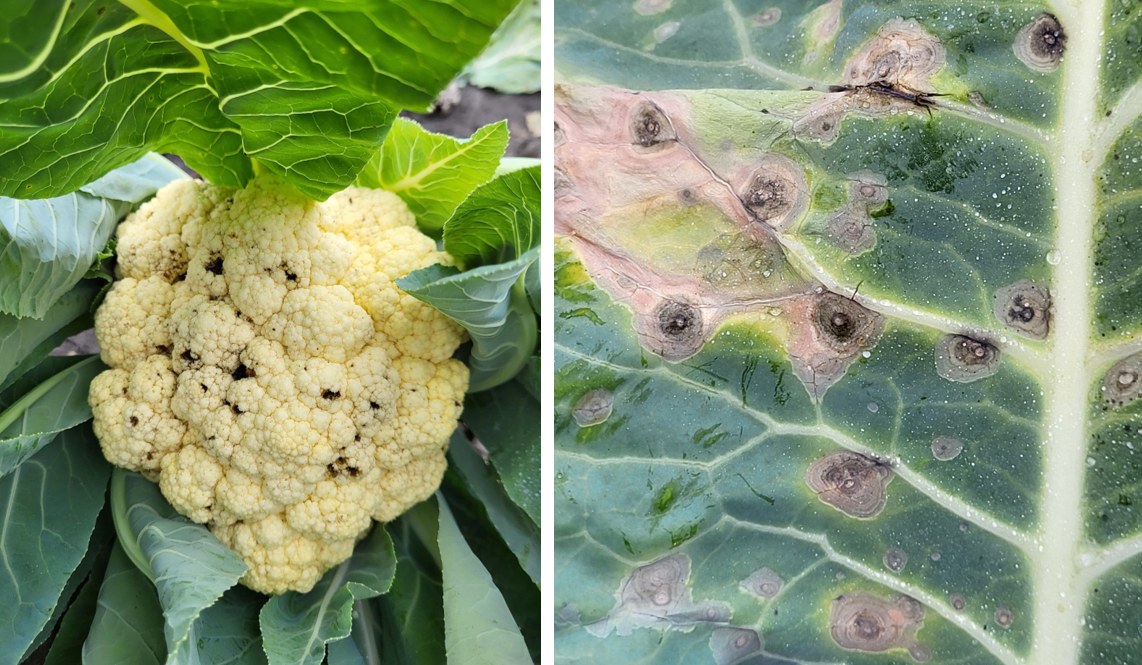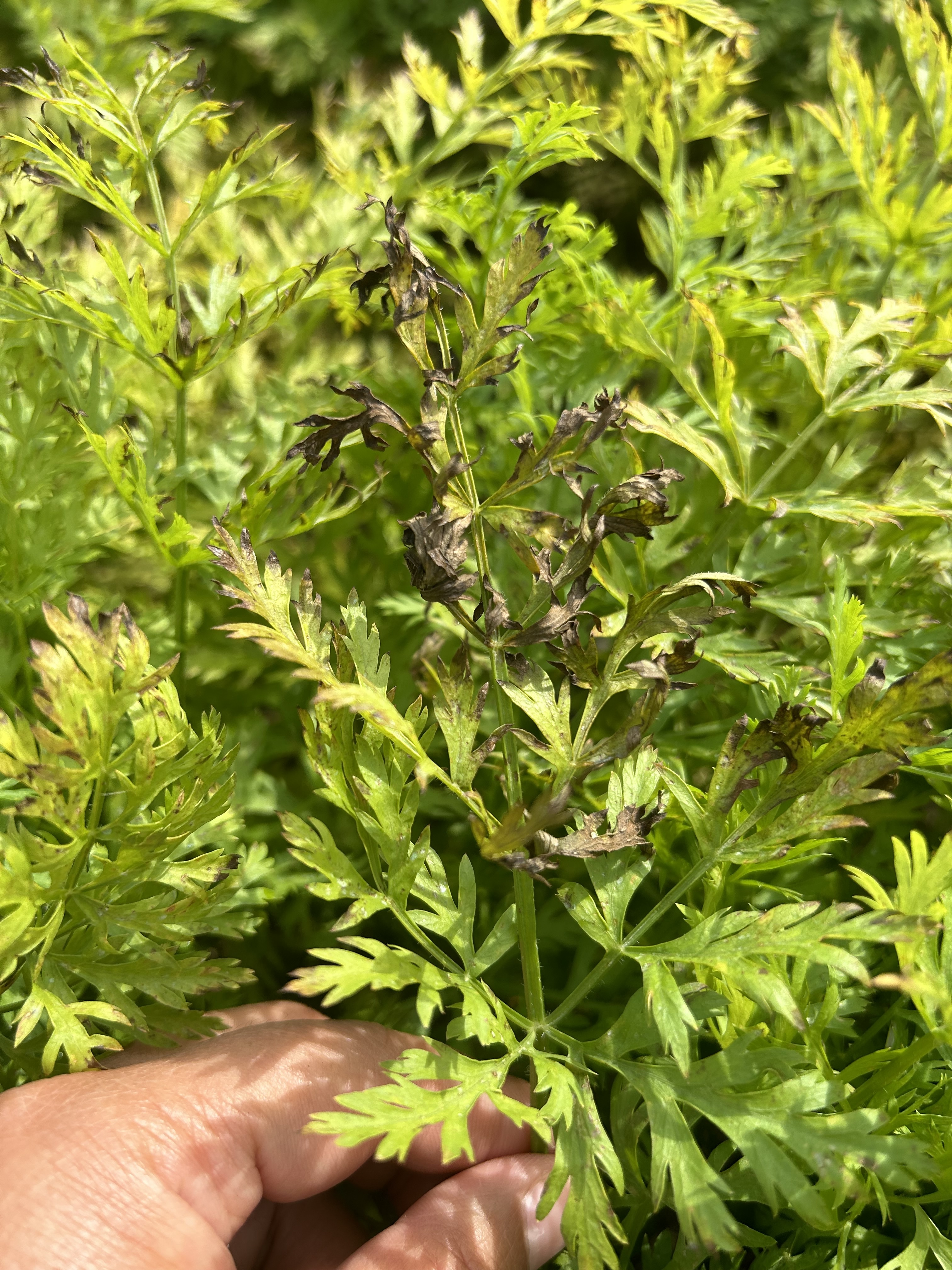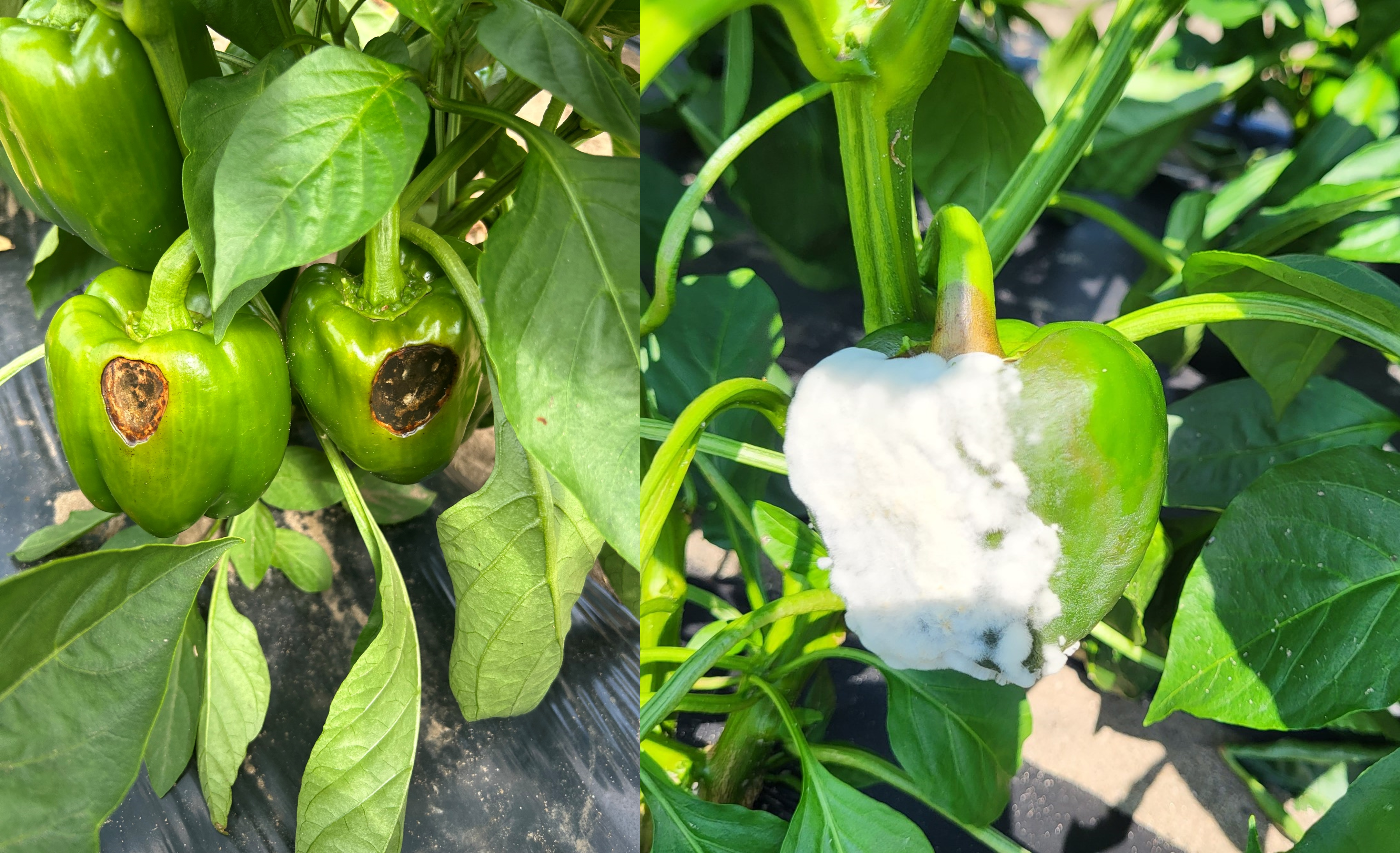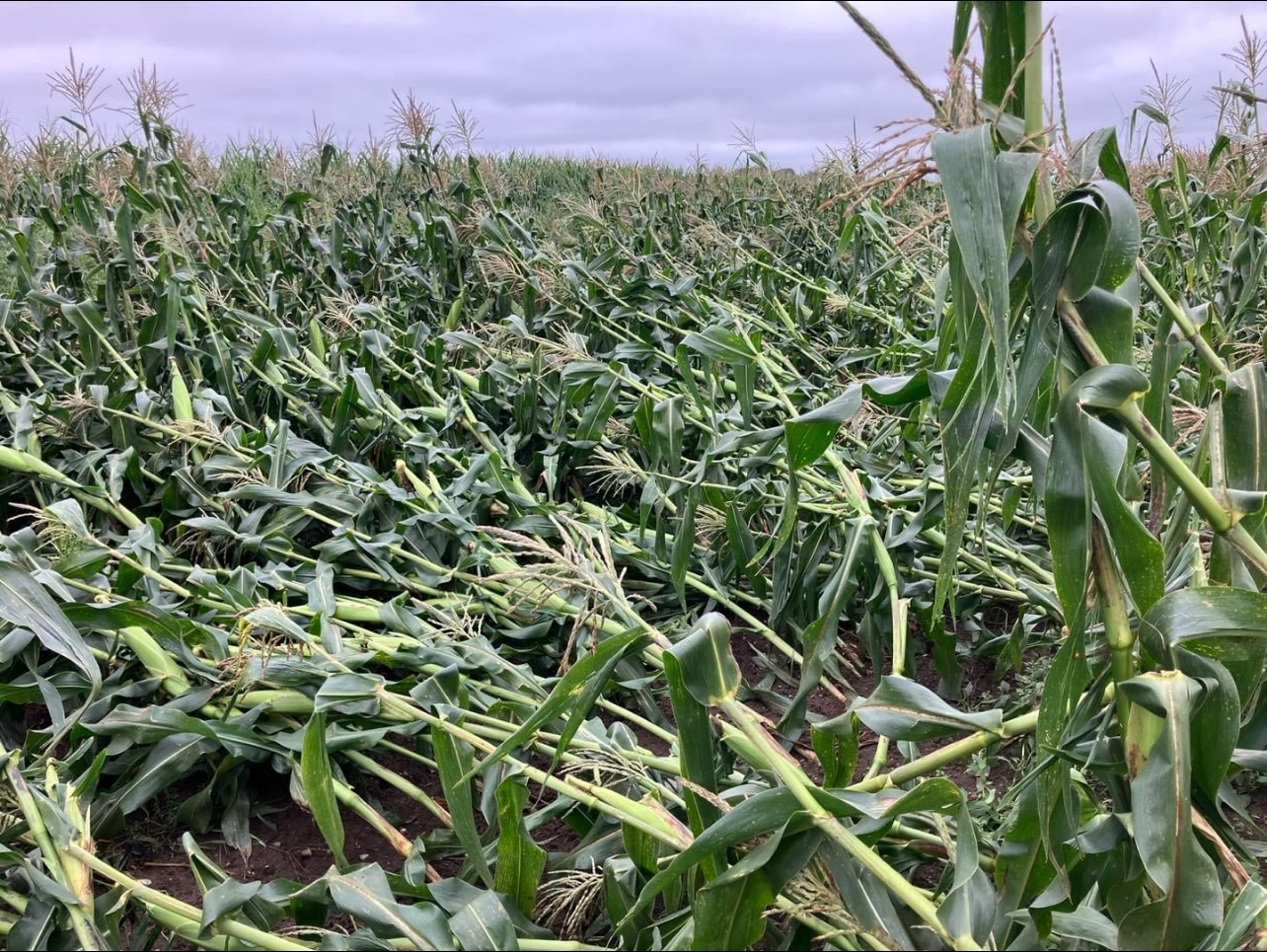Michigan vegetable crop report – September 4, 2024
This is the last week of our 2024 weekly reports. Thanks for your readership and good luck with the rest of the season.
Weather
The upcoming week’s forecast includes:
- Mostly sunny, dry and warmer Wednesday (Sept. 4). Showers and thunderstorms developing northwest and spreading southeast through the state Thursday through Friday morning. Partly to mostly cloudy and sharply colder this weekend with scattered showers possible. Fair, dry and cool early next week.
- High temperatures warming from the upper 70s south to low 80s south Wednesday to the upper 70s north to mid-80s south Thursday. Highs falling back to the 50s north to 60s south this weekend. Low temperatures from the 50s Thursday to the 50s to low 60s Friday morning, cooling to the 40s this weekend.
- Normal to below normal daily potential evapotranspiration (PET) rates expected this week (average daily values from 0.11-0.15 inches).
- Medium range outlooks generally call for drier than normal weather with a transition from cooler than normal mean temperatures next week warming back to above normal levels again by the middle of the month.
Future weeds and futuristic weeders
As cool temperatures set in and daylengths shorten, short-day summer annuals like purslane, pigweed and lambsquarters produce hundreds of thousands of seeds even when relatively small. Therefore, your future self will likely be happier if you are able to till or spray these weeds before they set too many seeds. Unfortunately, tilling to kill summer annuals can not only harm your soil, but often causes a flush of overwintering weeds (e.g., chickweed, shepherd’s purse, white campion), which may cause problems next spring. Herbicides have the advantage of killing summer annuals without stimulating a flush of winter weeds, but many are ineffective on large reproductive plants under cool weather conditions. Flame weeding has similar limitations on larger, more established weeds. Another approach is to mow, till and plant a winter cover crop like rye to help repair and protect soils, while preventing establishment and growth of winter weeds.
Of course, weeds that escape and set seeds within late cash crops are difficult or impossible to manage this time of year. While it is too late this year to do much about these weed escapes, the fall is a good time to start thinking about next year’s weed plan and considering investments in tools that may help. If you have time next week and are up for a drive, consider attending the 2024 Midwest Mechanical Weed Control Field Day on Sept. 11 in Lafayette, Indiana. Tools for all scales will be displayed or demonstrated including well-established work horses such as finger weeders, flextine cultivators and camera-guided hitches as well as more futuristic weeders including an autonomous, solar-powered, seeder-weeder (FarmDroid FD-20), which is being tested and demonstrated for farmer-feedback through Michigan State University (MSU) this season. You can watch videos of the FarmDroid as well as other mechanical weeding tools.
More detailed information and research related to physical weed control is available through Physical Weed Control Forum.

Report 2024 crop damage to Farm Service Agency
Michigan Farm Bureau is encouraging growers who have experienced crop damage due to 2024 natural disasters such as tornado, flood, hail, wind and other events to report damages to the Farm Service Agency (FSA). Read more about this in the Michigan Farm News coverage /or contact your local FSA office.
Crop updates
Brassicas and greens
Broccoli, cauliflower, cabbage, collard greens, kale and salad mixes of all types are being planted and new plantings are going in for fall harvest. The cooler weather of autumn makes many leafy greens much less prone to bolting or slow growth.
Bacterial soft rots and Alternaria (also known as black speck) are a common sight on broccoli and cauliflower heads this time of year. They can occur separately or together, but the typical pattern is Alternaria starts infecting leaves, and then eventually jumps to the developing head. Tying of cauliflower leaves for blanching can further exacerbate Alternaria by creating warmer, moister conditions for the disease to proliferate. When mornings get dewy, bacteria hops along on the heads and starts a secondary rot. You will know if bacterial soft rot is involved by the putrid smell. Management for this complex starts with clean seed, resistant varieties, and early foliar management of Alternaria with fungicides. There is tons of good information from the Alternaria Brassicicola Research Project, and Cornell also developed a fungicide cheat sheet from this project.

Carrots and celery

Cucurbits
Pumpkin harvest has begun. Melon harvest is in full swing. Maintain powdery and Plectosporium protection. Stay vigilant against downy mildew and Phytophthora pathogens. See our most recent crop reports for information on management of these pernicious crop diseases.
Fruiting vegetables
Peppers, tomatoes, eggplant and okra are all going to market. Late plantings are starting up and early plantings are shutting down. Bacterial pathogens abound, and caterpillars and stink bugs are feeding more on fruit now. The characteristic thrips halo-shaped feeding damage can be found on tomato and pepper fruit at variable levels. Aphids are thick in some greenhouses and high tunnels.
Sunscald is a common problem in pepper production. It presents as areas of tan, dead tissue most commonly found on the southern and western sides of the plants. It is very common for secondary pathogens to infect the damaged area, causing fruit rots. Excessive sunscald is generally a result of insufficient canopy coverage—if there is not enough foliage to shade the fruit, it can be damaged during periods of intense sunlight. Providing adequate nitrogen early on promotes vigorous foliar growth, which can help protect the vulnerable fruit from the sun’s rays throughout the remainder of the season. Below are two examples of two different diseases that moved in following sunscald injury. Read more about alternaria fruit rot and sunscald on pepper and other vegetables.

Sweet corn
Sweet corn harvest is still going strong across the state.
Corn earworm captures increased at some locations over the past week, especially in west and east Michigan, and earworm was present in corn in some fields. To our south, trap catches have been higher in some parts of Purdue’s trap network, while they remained low in Ohio State’s. The Insect Forecast website predicts a low risk of a corn earworm migration along the southern half of the Lake Michigan shore.
Products containing the active ingredients chlorantraniliprole or spinetoram may perform better than pyrethroids if and when captures increase. Tighter spray intervals may improve control when trap catches are high and/or weather is warm. Spraying can be discontinued once corn has 90% brown silks, as it’s the green silks that attract egglaying females.
|
Corn earworm captures. Total in trap for week1 (avg # per night2). |
||||||||
|---|---|---|---|---|---|---|---|---|
|
Week |
Monroe |
Washtenaw |
Oceana |
Ottawa |
Lapeer |
Bay |
Saginaw |
Berrien |
|
9/2 |
17 (1.9) |
- |
- |
- |
11 (1.6) |
122 (17.4) |
2 (0.2) |
19 (2.7) |
|
8/26 |
6 (0.9) |
2 (0.2) |
169 (24.1) |
119 (17.0) |
- |
8 (0.9) |
3 (0.4) |
28 (4.0) |
|
8/19 |
- |
0 (0) |
41 (13.7) |
44 (8.8) |
0 (0.0) |
3 (0.4) |
1 (0.1) |
18 (2.6) |
|
8/12 |
0 (0.0) |
0 (0.0) |
15 (1.4) |
8 (0.9) |
0 (0) |
0 (0.0) |
3 (0.4) |
5 (0.7) |
|
8/5 |
1 (0.1) |
0 (0.0) |
6 (0.9) |
28 (4.0) |
- |
1 (0.1) |
1 (0.1) |
4 (0.5) |
|
7/29 |
4 (0.5) |
0 (0.0) |
4 (0.7) |
13 (1.6) |
0 (0.0) |
0 (0.0) |
0 (0.0) |
3 (0.4) |
|
7/22 |
2 (0.4) |
0 (0.0) |
1 (0.1) |
0 (0.0) |
- |
1 (0.1) |
0 (0.0) |
4 (0.5) |
|
7/15 |
0 (0.0) |
1 (0.1) |
8 (1.1) |
15 (1.7) |
2 (0.3) |
0 (0.0) |
- |
- |
|
7/8 |
0 (0.0) |
2 (0.2) |
8 (1.1) |
14 (2.0) |
- |
- |
- |
- |
|
6/30 |
- |
- |
5 (1.0) |
30 (6.0) |
- |
- |
- |
- |
|
6/23 |
- |
- |
2 (1.0) |
- |
- |
- |
- |
- |
|
1Total number collected since last trap check; 2The total number divided by the number of nights since the last trap check |
||||||||

Breakfast on the Farm
If you are interested in hosting a Breakfast on the Farm event on your farm next year, or if you would like more information on the community engagement opportunity to see if it is a right fit for you, please reach out to your local MSU Extension educator or Ashley Decker at kuschela@msu.edu or 586-469-7616.
Nutrient management survey
Soil nutrient deficiencies that limit crop yield are often foremost on farmer’s minds but nutrient excesses, especially phosphorus and nitrogen, seem to grab the headlines. Michigan State University Extension is asking farmers from all types of production systems to help identify practices they use by filling out a brief anonymous online survey describing soil conditions and approaches used for soil phosphorus and nitrogen management. Read more information and access the survey.
Produce food safety On-Farm Readiness Reviews
Schedule an On-Farm Readiness Review (OFRR) today for a two-hour educational visit that takes place during the harvest season and is meant to be casual and low stress! Everything discussed during an OFRR is confidential and focused on ways you can reduce your own risks in relation to produce safety. There is no pressure to take our advice either, we are just here to support you in your produce safety efforts!
Events
- Sept. 11, 8am-4pm, 2024 Midwest Mechanical Weed Control Field Day
- Sept. 12, 7-8 a.m., Field Crops Virtual Breakfast Series: Grain Marketing
- Sept. 17, 6-8 p.m., Veggie Vibes at SWMREC
- Sept. 19, 7-8 a.m., Field Crops Virtual Breakfast Series: Late Season Weed Control
- Sept. 23, Field Day at the Trevor Nichols Research Center, Fennville, MI
This work is supported by the Crop Protection and Pest Management Program [grant no. 2021-70006-35450] from the USDA National Institute of Food and Agriculture. Any opinions, findings, conclusions, or recommendations expressed in this publication are those of the author(s) and do not necessarily reflect the view of the U.S. Department of Agriculture.



 Print
Print Email
Email




